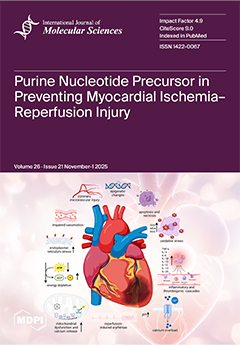The human endometrium, previously considered a sterile environment, is now recognized as a low-biomass but biologically active microbial niche critical to reproductive health. Advances in sequencing technologies, particularly shotgun metagenomics, have provided unprecedented insights into the taxonomic and functional complexity of the endometrial
[...] Read more.
The human endometrium, previously considered a sterile environment, is now recognized as a low-biomass but biologically active microbial niche critical to reproductive health. Advances in sequencing technologies, particularly shotgun metagenomics, have provided unprecedented insights into the taxonomic and functional complexity of the endometrial microbiome. While 16S rRNA sequencing has delineated the distinction between
Lactobacillus-dominant and non-dominant microbial communities, shotgun metagenomics has revealed additional diversity at the species and strain level, uncovering microbial signatures that remain undetected by amplicon-based approaches. Current evidence supports the association of
Lactobacillus dominance with endometrial homeostasis and favorable reproductive outcomes. Dysbiosis, characterized by increased microbial diversity and enrichment of anaerobic taxa such as
Gardnerella,
Atopobium,
Prevotella, and
Streptococcus, is linked to chronic endometritis, implantation failure, and adverse IVF results. Beyond compositional differences, the endometrial microbiome interacts with the host through immunological, metabolic, and epigenetic mechanisms. These interactions modulate cytokine signaling, epithelial barrier integrity, and receptivity-associated gene expression, ultimately influencing embryo implantation. However, discrepancies between published studies reflect the lack of standardized protocols for sampling, DNA extraction, and bioinformatic analysis, as well as the inherent challenges of studying low-biomass environments. Factors such as geography, ethnicity, hormonal status, and antibiotic exposure further contribute to interindividual variability. Culturomics approaches complement sequencing by enabling the isolation of viable bacterial strains, offering perspectives for microbiome-based biotherapeutics. Emerging 3D endometrial models provide additional tools to dissect microbiome–host interactions under controlled conditions. Taken together, the growing body of data highlights the potential of endometrial microbiome profiling as a biomarker for reproductive success and as a target for personalized interventions. Future research should focus on integrating multi-omics approaches and functional analyses to establish causal relationships and translate findings into clinical practice. This review gives a new insight into current knowledge on the uterine microbiome and its impact on implantation success, analyzed through the lenses of microbiology, immunology, and oxidative stress.
Full article






